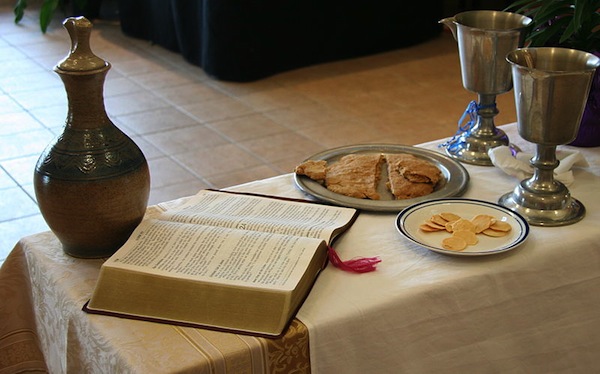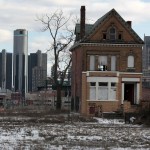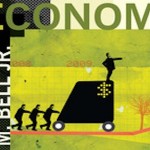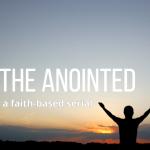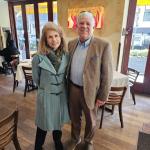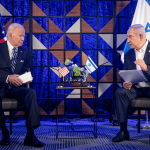In an interesting read from Time Magazine, Mary Eberstat, author of this new book on secularism, argues that “in the war over Christianity, orthodoxy is winning.” She uses a fight over an Episcopalian church in Virginia, in which a breakaway traditional group in the church lost its legal battle with the mainline sect for ownership of the church’s physical property, as an example of how orthodoxy is “winning”:
That traditionalist breakaway congregation in Virginia is larger than the one on the legally winning side — as in, much. Membership on the “losing” side, by one estimate, includes some 2,000 souls, as opposed to some 174 in the congregation moving in. And though exact numbers may not always be available, the larger trend is clear: this numerical division between traditionalists and reformers is also seen around the world. It’s the stricter Christian churches that typically have stronger and more vibrant congregations — as has been documented at least since Dean M. Kelley’s 1996 book, Why Conservative Churches Are Growing.
At this point, one cannot reasonably doubt that the future of Christianity is orthodox (little o) rather than liberal (which is one of the many reasons I find the push amongst liberal Catholics to basically become mainline protestants so puzzling). Yet there’s a deeper critique that needs to happen as well that is implied by the broader argument being made in the piece linked above.
While it’s obvious that within the church orthodoxy has won, it is equally obvious that in terms of broader cultural projects the mainline has won. Liberal Christianity—and I don’t mean that as a political term, but as a very specific description of 20th century western Christianity in Europe and portions of the American church—embraces a functional materialism while maintaining an openness to a sort of noumenal reality that can’t be reduced to blunt materiality. If this calls to mind much of the “spiritual but not religious,” rhetoric so common today, then we’re on the same page.
Additionally, the ethic embraced by liberal Christianity has often emphasized individual freedom and the importance of inclusiveness—defined not in Christian terms, but in the terms of a more secular, materialistic culture—as the center of Christian faith and practice. Indeed, to read some liberal Christians is to discover that the only group that ought not be included are those skeptical of blanket inclusiveness.
In other words, the famed “nones” who do not have any religious affiliation are the second or third generation consequence of 20th century liberal Christianity. One point seldom mentioned in discussing the nones is that they hardly vindicate the new atheists. Of all the nones, 55% say they are either “religious” or “spiritual but not religious.” The nones are simply the consequence of a theology that marginalizes the church and distances itself from the hard edges of Christian faith matures.
What does this mean for the future of Christian faith? Several points seem most important:
First, orthodox Christians ought not be too triumphalistic as they consider the death of liberal Christianity. That death simply represents the triumph of mainline Christianity and the rise of an irreligious culture—hardly things orthodox Christians ought to celebrate.
Second, it is more important than ever that Christians ground their daily Christian life in the local church and that we recognize the church as a separate and distinct political body. Here the works of Hauerwas, Cavanaugh, and O’Donovan will be essential, I think. (Yes, they are all radically different theologians, but the basic insight shared by all is that the church is a polis.)
Third, and most hopeful, as orthodox Christians ground their daily practice within their church communities and embrace a way of life that stands opposed to the consumption and materialism of the outside world, there is reason to hope that this may drive distinct Christian bodies closer together and closer toward unity. The Time article raises that very point when it mentions that the evicted Anglicans of The Falls Church have more in common with conservative Catholics and evangelicals than they do with the Episcopalian church. Indeed, we’ve already seen this in Europe with the Roman church’s provision for receiving Anglican churches into fellowship. I think a similar spirit animates American ecumenical groups ranging from Evangelicals and Catholics Together to The Gospel Coalition, a network of Reformed evangelical Christians created by Presbyterian pastor Timothy Keller, Baptist minister John Piper, and evangelical free seminary professor D.A. Carson. (Evangelical free churches have their roots in the Lutheran tradition, which means TGC could be said to represent the first steps toward reunion of the three main branches of the Protestant reformation—Reformed, Lutheran, and Anabaptist.)
So on the one hand, orthodox western Christians should not be too eager to pat themselves on the back. The “victory” over the mainline is largely pyrrhic because the mainline has achieved precisely what one would expect it to achieve in terms of broader cultural projects. That said, the drawing of a harder line between the popular mainstream culture of the contemporary west and the culture of the church is good news for us because it allows the contours of the gospel to be more easily discerned. As Chesterton noted in the introduction to one of his books—I believe it was The Everlasting Man—the next best thing to being in the church is to be completely outside it. It is when we occupy that middle ground in which we stand outside the church but not far enough outside to realize it that confusion occurs and the unique claims of the Gospel are lost.
[Image of Communion Table Courtesy of Wikipedia]

